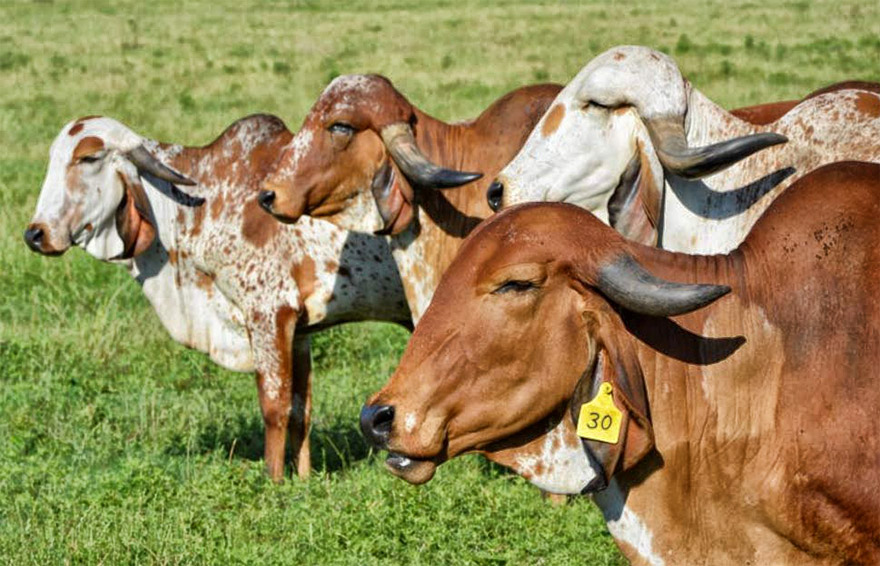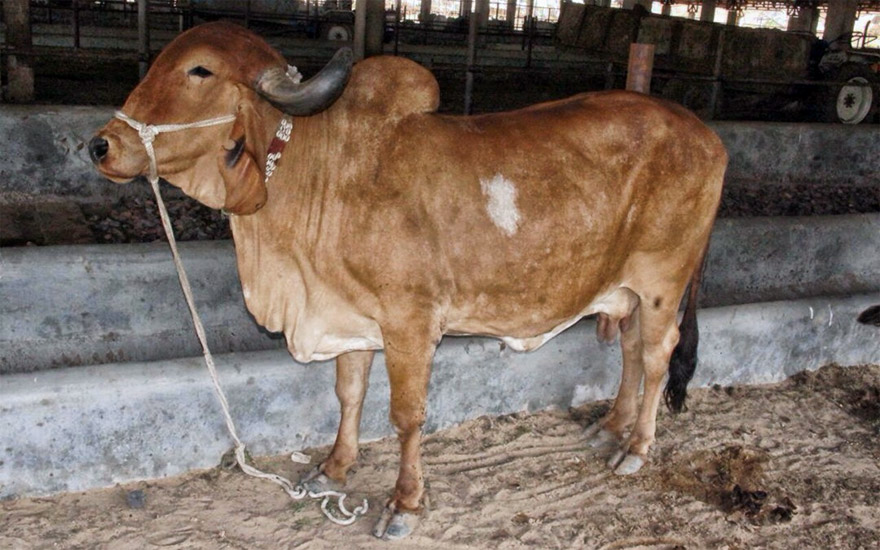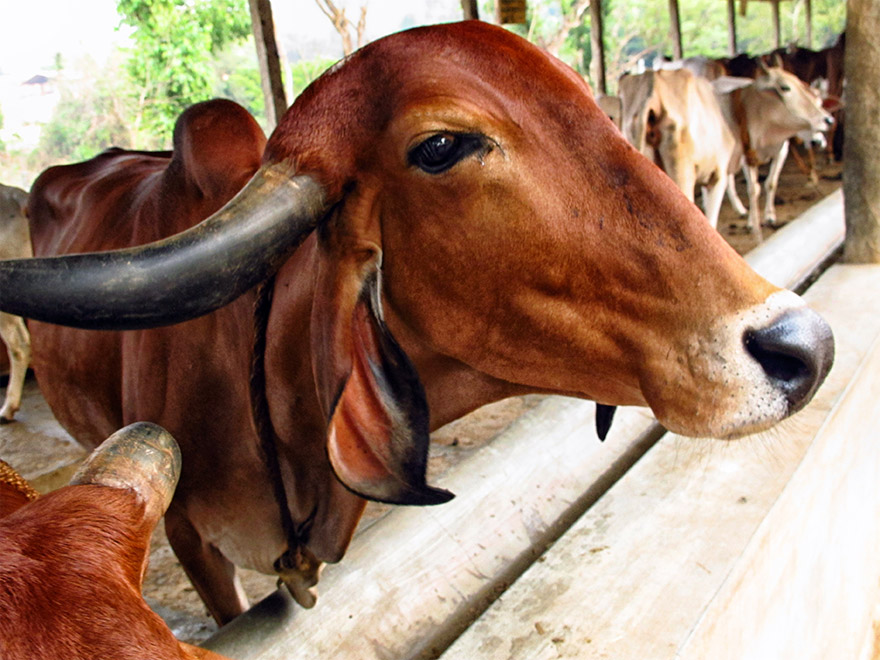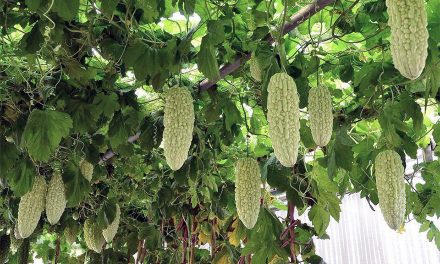The famous Gir cow is worth its weight in gold, quite literally! After four years of extensive research, scientists at Junagadh Agricultural University (JAU) have actually found gold in the urine of Gir cows. The analysis of urine samples of 400 Gir cows done at the Food Testing Laboratory of JAU showed traces of gold ranging from three mg to 10 mg from one litre urine. The precious metal was found in ionic form, which is gold salts soluble in water.
The team of researchers led by Dr B A Golakia, head of JAU’s biotechnology department, used gas chromatography-mass spectrometry (GC-MS) method to analyze the urine samples.
[wp_ad_camp_1]
“Till now, we have heard about presence of gold in cow urine from our ancient scriptures and its medicinal properties. Since there was no detailed scientific analysis to prove this, we decided to undertake a research on cow urine. We analyzed 400 samples of Gir cow urine and found traces of gold,” Golakia said.
Golakia said the gold from urine can be extracted and solidified using chemical processes. The researchers also screened urine sample of camel, buffaloes, sheep and goat but they did not find any anti-biotic elements. Of the 5,100 compounds found in Gir cow urine 388 have immense medicinal value that can cure several ailments,” said Dr B I Golakia, head of JAU’s biotechnology department. He was assisted by researchers Jaimin, Rajesh Vijay and Shraddha. They will now analyze urine samples of all 39 indigenous cow breeds of India for the same purpose.
JAU’s Food Testing Laboratory is accredited by the National Accreditation Board for Testing Calibration Laboratories (NABL). On an average, it conducts 50,000 tests every year on various products which include items of exports, dairy items, vegetables, pulses, oil seeds, honey , pesticide residuals and other commodities. The lab is a joint venture of JAU Union ministry of food processing industries, Indian Council for Agricultural Research (ICAR) and Gujarat Agro Industries Corporation (GAIC).”Now, we are working on the use of Gir cow urine on human and plant pathogen. The experiments are being conducted to use it in treatmen t of human diseases and plant protections,” Golakia added.
A day after its team of researchers found traces of gold in the urine of Gir cows, Junagadh Agricultural University (JAU) on Tuesday said it would seek the help of other researchers and laboratories for replication, even as ayurveda experts hailed the development.
“The Agricultural Research Council sub-committee on basic science has reviewed the findings of the team led by Prof Balu Golakia, and has concurred that traces of gold are present in the urine of Gir cows. The research team worked very patiently and meticulously for about five years before coming to their conclusion. The laboratory where they carried out their analysis is a setup accredited by the National Accreditation Board for Testing and Calibration Laboratories (NABL). But now we shall submit the findings of the team to other researchers for replication and further validation,” JAU vice-chancellor Prof Aarvind Pathak told The Indian Express on Tuesday.
The Agricultural Research Council is an in-house body of JAU, monitoring research in various fields by students and researchers associated with the varsity. The vice-chancellor is its chairman, while heads of various departments and principals of JAU colleges are its members. The committee also has independent experts on its board.
The research team led by Prof Balu Golakia, head of department of biochemistry and biotechnology, had announced on Monday that a litre of Gir cow urine contains three milligrams to 10 milligrams of gold. Over the last four years, the team tested 400 urine samples collected from Gir cows kept at the JAU cattle breeding farmin Junagadh. The team employed the Inductively Coupled Plasma Mass Spectrometry (IPC-MS) process at the Food Testing Laboratory of department of biochemistry and biotechnology for elemental analysis of cow urine. The team found traces of gold in the form of water-soluble salt, along with other metals.
The researchers also deployed Liquid Chromatography Time of Flight Mass Spectrometry to detect unknown metabolites in cow urine and Gas Chromatography Time of Flight Mass Spectrometry to count the total compounds in the urine samples. Prof Golakia said that through IPC-MS, they could detect gold and other metal salts in the urine. The equipment they used for conducting this process has the precision of counting parts per billion.
“There is a reference in Atharva Veda that cow urine contains gold. We wanted to validate this claim, and therefore, took up this minor project of trying to find traces of gold in urine, along with our larger project of analysing cow urine holistically and find out its properties useful for human and plant health,” Prof Golakia said.
The research team leader further said that the gold content varied with age of cows and season of the year: “The gold concentration is higher in urine of calves as compared to adults. Similarly, more gold was found in urine of dry cows as compared to milching ones. The gold content was observed higher in samples collected during summer as compared to monsoon.”
The research team also simultaneously tested samples of urine from buffaloes, camels, goats and sheep, but they returned negative for gold. “The gold salt in cow urine can be transformed into powder, and then into metal balls. But we do not prescribe to start an industry of extracting gold from cow urine. The objective of the research was to demonstrate to farmers how important is cow urine and by extension, the cow as an animal. Work is on to identify compounds in cow urine which can be used for plant health and growth,” said the professor, adding that preparations were on to submit their findings to science journals for publication.
The research team identified 5,100 compounds in the cow urine, and said that 388 of them have medicinal properties. “The ayurveda fraternity welcomed the development. “This is a significant and very important observation. It can lead to new therapies in disease cure. Gold is very vital for almost all functions of the human body, especially our nervous system. As prescribed in Ayurveda, Swarnaprashana or small quantity of gold mixed with liquid and given to children boosts their mental health and development,” said Vaidya Rajesh Kotecha, vice-chancellor of Gujarat Ayurvedic University, Jamnagar. Vaidya Kotecha further said that they will include the observations of JAU researchers in a registry that the Ayurveda Universtiy is building so that ayurveda practitioners and researchers can replicate and validate the research.
Source: Indian Express












Very Informative. At the Art of Living Ashram, Bangalore there is a well maintained Gowshala. Pujya GuruDev has done yeoman service to protect cows.
Nice. Elevated the species of cows. It is surprising how and with which technology ancient people could find this element in cows. Hats off to their geniousness.
interesting to read that the urine of cows of Gir area in Gujerat contain traces of gold .As a geologist I would like to know if these cows graze any particular locality and if so whether that locality has any specific grass or shrubs these cows graze.It will be interesting if the research group analyse dried grass for gold to see whether gold could be traced to some hidden gold-rich geological horizons beneath the soil cover in the locality.
Excellent findings.
As it is very useful for medicinal purpose whether it can be preserved and if so its shell life is not explained. O
Only aboutgold recoverwy..where cowurine is not available readily it mayy have to be preserved.
Now people may rear even the old cows for urine.
Good.It proved the greatness of Cow.We must respect it.But we cant do anything more.
You have not furnished the web site in this Sir. How should I know mre about the Therapy for different Ailments and diseases?
Kindly apprise to my E mail address given below. Thanking You
Excellent topic and best wishes for the scientist for finding out the gold in Gir cows.
Gold is used to treat Rheumatoid Arthritis in Ayurveda as Suvarnabhasma. It is also used in Allopathy as Sodium Aurothiosulphate in injection form.
This is a very useful article. After reading this article, people’s respect for cows should increase and they be saved from slaughter. Hindus have always placed them at a very high pedestal. God bless you and God bless all.
The findings of the research are laudable. But scientists of other countries also should analyse it because anything in science discovered by a country should be accepted by scientists of all over the world. It is good that the urine of Gir cows have medicinal properties curable diseases. Commercial production of gold from urine may not be feasible as it requires more than 100 literes of urine for 10 gms. gold.
The information gathered here is so amazing and hard to believe but ours is a country full of many a miracles ! Isn’t it true ?